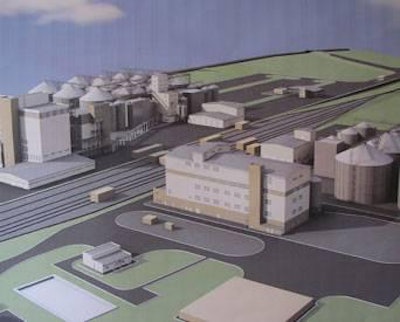
The growth of the Ukrainian feed industry will double in the coming future following a series of large investments, say forecast experts with the country’s Ministry of Agriculture. According to analysts, the country, which in 2012 reported 10 million tons of annual production and a growth rate of 10 to 15 percent per year, is expected grow its total feed production output by 60 percent.
In addition, other trends within the country may play a part in influencing this growth potential.
Feed production to move ‘out of the shadows’
According to official forecasts, the pace of development in the Ukrainian feed industry has been relatively low in recent years. Thus, according to data from the country’s State Statistics Service, in the last five years the industrial production of feed grew by 7 to 8 percent, which accounted for growth in cattle (13 percent), pig (31 percent) and poultry (4 percent) feed. During the same time, the cost of feed production on the market rose by 15 to 18 percent.
According to Nikolay Vernitsky, director of ProAgro, the Ukraine’s leading agricultural analytical center, the statistical data does not fully display the scales of Ukrainian feed production because 40 percent of total feed is produced and sold “in the shadows.”
“As a rule, it is the small enterprises which simply don’t report their activity,” he states. The activity on the shadow market allows these entities to avoid paying taxes as well as veterinary inspections of production quality.
Representatives from the country’s State Veterinary and Phytosanitary Services note that with the developing market and the spread of African swine fever in neighboring Russia and Belarus, the control over the feed market in the coming years will be strengthened so the majority of these producers will have to report their activities even if they are solely producing feed for their own livestock farms.
Experts also report that more than 70 percent of industrial Ukrainian feed production is currently accounted for by the largest agricultural holding companies. In particular, the largest feed producer MHP, which comprises 25 percent of all feed production in Ukraine, owns four of the largest feed mills in the country (Table 1). The second largest producer of feed, Avangard, accounts for 7.9 percent of its total market volume; and the third largest manufacturer, Agromars, accounts for 7.7 percent.
Ukraine partners with EU to help the industry
Ukraine imports about 50 percent of its animal protein, mainly from Europe, which also leads to an essential rise in the cost of feed production in the country’s market due to high custom duties (up to 20 percent) on imported sources of animal protein products. However, in mid-2014 Ukraine intends to sign the agreement on the creation of the Free Trade Zone between Ukraine and Europe, which in the opinion of compound feed producers will have an extremely positive effect on the market prices.
“On one hand, the competition will rise as the market will be opened for finished feed products; however, on the other hand, the Ukrainian market becomes more interesting for foreign investors from the countries of Western Europe for which Ukraine could become a prospective site for growth,” commented Mikola Prohorchuk, a member of the Poultry Producers Union of Ukraine. “The negotiations on several investment projects in the area are already ongoing and, after the signing of this agreement, they will be intensified. At the same time the price for feed protein on the market will fall. It will give strong incentive for the development of industry.”
Partly as a result of this agreement, it is predicted that the Ukrainian feed industry will attract up to EUR500 million in foreign investments in the next seven years. As a result of this, the price of processed feed products will reduce by 10 percent during the next year.
GMO project may contribute to growth
In parallel, the Ministry of Agrarian Policy and Food plans to begin the experimental production of feed crops using GMO technology in Ukraine. In the coming years, the country intends to become one of the largest food and feed producers in the world, so it now has to consider all tools that potentially will lead it to increase the productivity of agriculture, according to the representative of the Ministry of Agriculture and Food of Ukraine.
“Today we agreed that after the adoption of the necessary legislation, we will start experiment in the closed mode on the cultivation GMO feed crops,” commented the Ministry of Agriculture’s Nikolai Prisyazhnyuk on the initiative. “We intend to understand efficiency and the consequences of genetic engineering on forage crops, as it is very important. I would like to understand how the consumer market will react to it. We are ready today to carry out the general experiments in this direction.”
However the regional director of DuPont in Europe, Jeff Roui, noted that in Ukraine at the moment “there are absolutely no standards and legal base for carrying out such GMO tests.” Thus, prospects of influence of the project on the feed industry could be considerable, but still in many respects, they remain unclear.
Experts suggest the cultivation of GMO crops has already been proven in its efficiency for feed industry in other countries so Ukraine can adopt it based on the experiences of its trade partners. The cultivation of GMO can provide the additional amount of raw material the feed industry requires, which also will positively influence prices. However, the anti-GMO movement in country is very strong so the officials admit that actual cultivation of GMO crops could be started no earlier than 2015.













